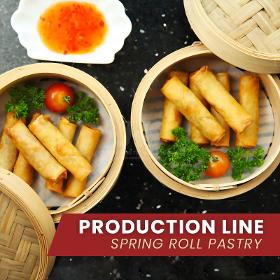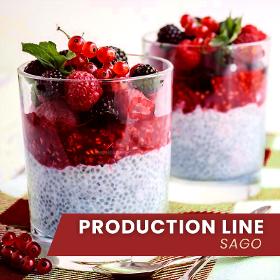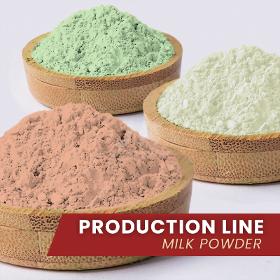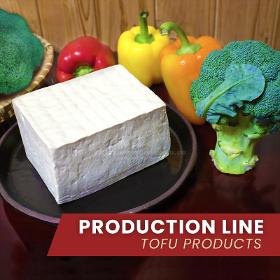JING HENG SING TECHNOLOGY CO., LTD. - FOOD PROCESSING & PACKAGING MACHINERY manufacturers
Taiwan R.O.C.
Manufacturer/ Producer


JING HENG SING TECHNOLOGY CO., LTD.
Taiwan R.O.C.
TORTILLA is a popular flatbread that originated in Mexico. It is made from wheat or corn flour and is obtained without leavening. It was first made by the people of Mesoamerica. The oldest variety of tortillas is the one made from corn flour. At the end of the 19th century, the first instruments for making tortillas, called tortilla presses, were invented. Later, when Europeans brought wheat flour with them to the Americas and began to grow wheat, it was from this time that wheat tortillas were born. Wheat tortillas also contain other ingredients such as salt and any type of fat such as oil or lard. They may also contain a leavening agent, such as baking powder. Tortillas are the staple of the Mexican diet and are used to scoop or wrap grilled or baked meat. They can contain cheese, meat, sauce, and vegetables. They are the most popular food not only in Mexico but also in many places in Central America.
Request for a quote
JING HENG SING TECHNOLOGY CO., LTD.
Taiwan R.O.C.
PARATHA is a popular dish originating from the Indian subcontinent. However, today it is a popular food eaten in many parts of Asia and wherever the Indian community has settled. It is a flatbread usually buttered and on which oil or ghee is applied. Paratha is an amalgamation of the words parat and atta, which literally means layers of cooked dough. Parathas are a staple of Punjabi cuisine and very popular in North Indian cuisine. In Punjab, it is common to stuff the flatbread with several vegetables or meats. A paratha is usually much thicker than the roti. This is because the layering technique makes the bread much thicker. The layering process is similar to making a croissant or puff pastry. Each layer is covered with a layer of butter to obtain the desired flaky result. Parathas are extremely tasty and nutritious. It is high in fiber and contains other minerals and vitamins like iron, copper and manganese.
Request for a quote
JING HENG SING TECHNOLOGY CO., LTD.
Taiwan R.O.C.
Most Asian countries have their own flavor of spring rolls. Spring rolls from each country look alike, but are different in their ingredients or appearance. Spring roll is a traditional snack in China. They are made of a thin dough filled with fillings and fried. Fillings and sizes vary from place to place, but they are basically flat tubes. In China, for example, most people use vegetables and meat as fillings, while in some northern areas they use red bean paste instead. In Malaysia and Singapore, spring rolls are called popiah. Inside the Popiah there is sauce, vegetables and garnish. The crust is first coated in sweet or hot sauce, then the ingredients are added. Spring rolls are also a popular dish in Vietnam. The difference between Vietnamese spring rolls and Chinese spring rolls is that the skin of the spring roll is not made with wheat flour but with rice flour. They can be eaten in two ways: fried or unfried, wrapped with lettuce leaves and dipped in sauce.
Request for a quote
JING HENG SING TECHNOLOGY CO., LTD.
Taiwan R.O.C.
SAGO is extracted from the core of palm stems. In markets, sago is sold in the form of pearls that can be eaten by making them into a pudding. Sago can sometimes be confused with tapioca pearls, and it has been seen that tapioca pearls are sometimes deliberately sold as sago because sago is a much more expensive to extract and prepare than tapioca. However, to the keen eye, the differences between the two are obvious. Sago pearls are uniform in shape and size, quite brittle, and their cooking time is much shorter. Apart from being edible, sago also has multiple other uses: It is sometimes used in the textile industry, after treatment with sago the fabric is much easier to machine. This process is known as sizing. Sago is also used as a thickener in cooking and in the biomedical field due to its vicious texture. Sago consists almost entirely of carbohydrates and is completely devoid of minerals or nutrients
Request for a quote
JING HENG SING TECHNOLOGY CO., LTD.
Taiwan R.O.C.
MILK POWDER also called dry milk is made from liquid milk whose water content is evaporated until only its dry content remains. One of the main reasons for producing powdered milk is that it greatly extends the shelf life of milk. Liquid milk expires very quickly while powdered milk can be consumed for a long time. Milk powder has several uses: First of all it is a popular choice for infant formula. In this case, it is made in such a way that it contains all the essential substances necessary for the infant. Second, it is used to make chocolates and other sweets. Third, it is also used in many baked goods where it is used as an alternative to liquid milk to achieve the desired consistency. Powdered milk has a high nutritional and caloric value, it contains the 21 essential amino acids that the human body needs. In addition to these, it contains several essential vitamins and minerals
Request for a quote
JING HENG SING TECHNOLOGY CO., LTD.
Taiwan R.O.C.
TOFU is a yellow-white lumpy soy food with soy as the main ingredient. It originates from China and is consumed very frequently in Vietnam, Malaysia, Indonesia, Singapore, Japan and South Korea. Soy is an excellent source of protein. It has been proven that it is very good for your health to eat tofu. In addition to being rich in high-quality vegetable protein, it is cholesterol-free, soy isoflavones, vitamin E and the vitamin B complex present in soy help improve metabolism and strengthen the intestinal flora. Following cultural exchanges between China and the West, as well as the growing importance of vegetarianism and healthy eating, it has been increasingly consumed in the West since the end of the 20th century. Today, tofu can be found in markets selling Asian products, health food stores, and Western supermarkets.
Request for a quote
JING HENG SING TECHNOLOGY CO., LTD.
Taiwan R.O.C.
TAPIOCA PEARLS or BOBA BALLS are a snack that has become very popular thanks to social networks like Instagram. Despite its popularity, few know its origins. It comes from the root of the cassava plant. From this plant, a type of starch is extracted. It is this starch which makes it possible to produce these balls called boba balls or tapioca pearls. They are usually added to tea to obtain the famous bubble tea. It is possible to modify the color and texture by mixing them with other ingredients such as sugar water or honey. To make them sweet, they are usually immersed in a sweet syrup for some time, allowing them to absorb the sweetness of the sugar which they will dissipate in any food to which they are added. However, when used in tea, it is not to enhance flavor, but rather to add texture.
Request for a quote
JING HENG SING TECHNOLOGY CO., LTD.
Taiwan R.O.C.
There are many kinds of DEEP-FRIED SNACKS in the world. The United States has the largest number of fast food restaurants in the world. You can find both sweet and savory snacks at the supermarket. Some of the most popular savory snacks include potato chips, chicken corn fritters, fried chicken, and French fries. As for the most popular fried sweet snacks, there are donuts, fried apple pie, and corn dogs. Frying is a form of cooking process that involves putting ingredients into a pan of oil. One of the common characteristics of fried snacks is that most snacks have a crispy coating on the outside and are soft on the inside. So when you take a bite of the snack, you can experience different textures at once. Nowadays, you can easily find snacks with different origins all over the world.
Request for a quote
JING HENG SING TECHNOLOGY CO., LTD.
Taiwan R.O.C.
Vacuum frying involves dehydrating and frying raw materials in a closed, vacuum environment. This type of frying makes it possible to preserve the original color of the raw materials and to produce a very pleasant sensation in the mouth. Traditional high temperature frying is between 160 and 185°C. If starchy foods are fried or cooked at high temperature (usually above 120°C), such as bread, sweet potato, taro, potato, etc., a large amount of "acrylamide" will be produced, which is a kind of chemical that has been shown to have adverse effects on humans in animal experiments. The frying carried out under vacuum allows a considerably reduced frying temperature of 90 to 110 ° C. In the vacuum state, the boiling point of water is lowered, and oil is used as a heat transfer fluid to allow the evaporation of the water content of the raw material in order to achieve the purpose of frying and dehydration, and to make the texture of food crispy.
Request for a quote
JING HENG SING TECHNOLOGY CO., LTD.
Taiwan R.O.C.
We are able to design, manufacture and install fully automated production lines ready for immediate use by our client. Do not hesitate to contact us to discuss your project with our team of professionals: good@cooker.com.tw
Request for a quoteManufacturer/ Producer
No.346, Sec.5, Dongqi Rd., Dongshi Dist.
423 Taichung - Taiwan R.O.C.